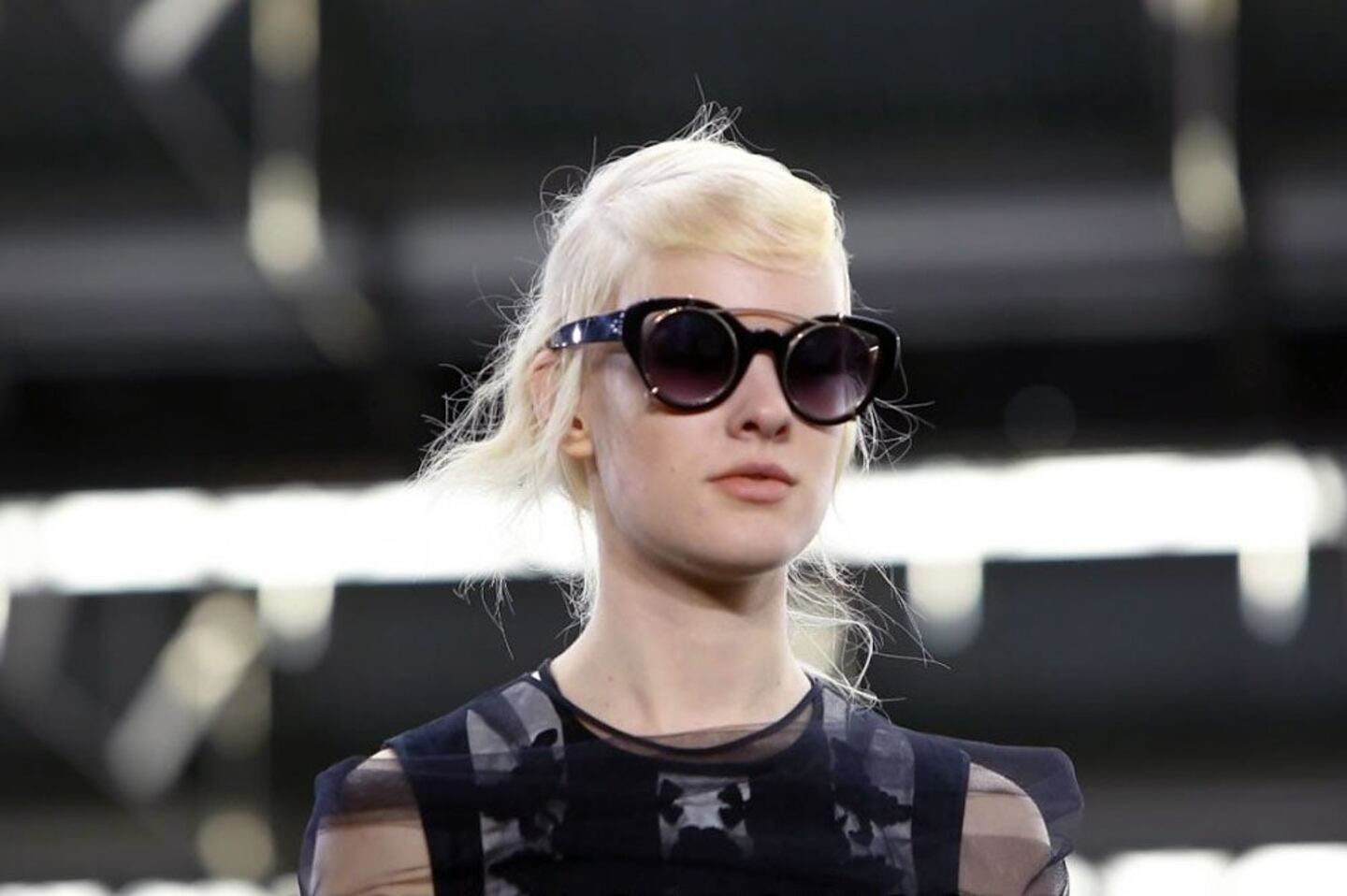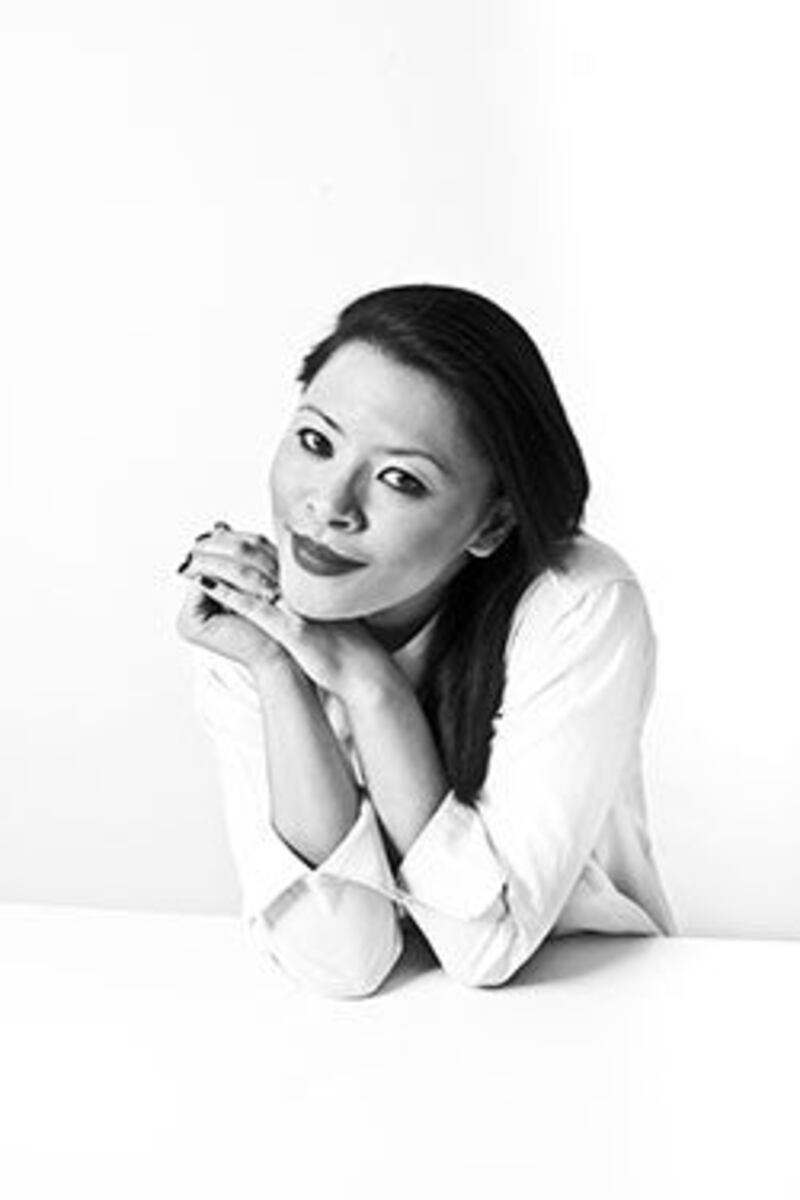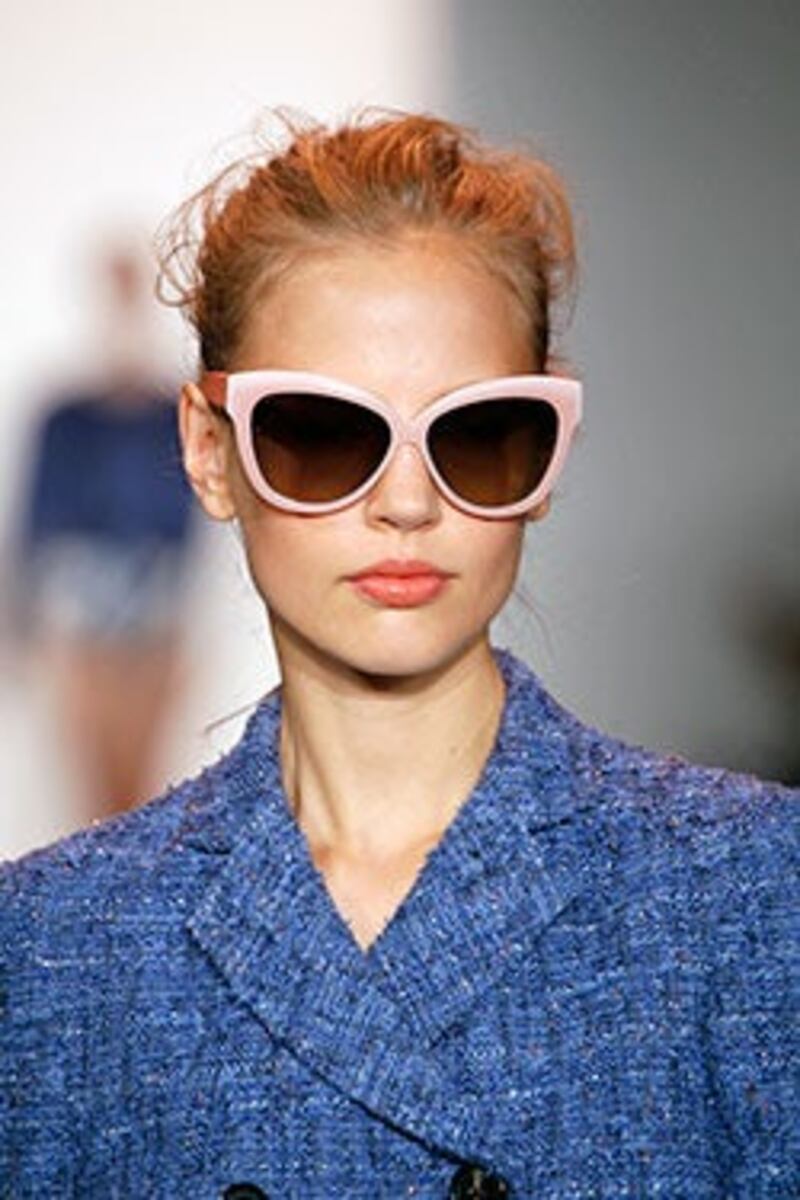
The Business of Fashion
Agenda-setting intelligence, analysis and advice for the global fashion community.

Agenda-setting intelligence, analysis and advice for the global fashion community.

LONDON, United Kingdom — With ostrich feathers stippled across the hemlines of skirts and ethereal silk petals appliquéd across sweatshirts, there were plenty of couture-like elements that brought intrigue and sophistication to this past season's Erdem collection. But it was the rounded, cat-eyed statement sunglasses by Linda Farrow — a London-based eyewear company best known for its offbeat frames produced in collaboration with brands like Dries van Noten and Jeremy Scott — that gave the runway show a youthful, streetwise energy.
Founded in 1970 as a luxury eyewear label for the international jet set, Linda Farrow also produced frames for designers like Yves Saint Laurent before the rise of large-scale manufacturers like Luxottica and Safilo, and the demands of a young family, forced the founding designer — one of the first to treat sunglasses as fashion items — to shutter her label in the late 1980s. The brand lay dormant until 2003, when it was given new life by her son, Simon Jablon, and his then girlfriend, now wife, Tracy Sedino.
Ten years on, Linda Farrow has grown to employ more than 50 full-time employees. The privately-held company does not disclose revenue figures, but in the last year has introduced three important new retail outlets: a shop-in-shop at London's Selfridges; a boutique on London's Mount Street; and another in the bustling Harbour City mall in the Tsim Sha Tsui district of Hong Kong, across from pioneering fashion retailer Joyce, owned by the Lane Crawford Joyce Group. The brand has also struck a chord in Thailand and the Philippines, two countries slated for new store openings next year. In total, Linda Farrow products are currently available in over 80 countries.

Tracy Sedino | Source: Courtesy
ADVERTISEMENT
With slicked-back hair, a bold scarlet lip and an easy, hearty laugh, Sedino recounted the happy discovery that resulted in the brand’s re-launch. “[Simon’s] parents have this massive warehouse in Islington and, basically, it was commercial property and they were given permission to turn it into residential property. His dad told us to go there and [clear it out] and we found all this amazing Balenciaga, Yves Saint Laurent, Pucci [sunglasses] and it was all in mint condition. Three floors, full of vintage sunglasses. Boxes from floor to ceiling. So we decided to re-launch the brand as Linda Farrow Vintage, because we were like, ‘We should do something with it.’”
Sedino and Jablon, then just 22 and 24, respectively, and "very newly dating," loaded what they could reasonably sort from the warehouse into a suitcase and hauled it around town. Buyers at leading stores like Browns and Harvey Nichols signed on immediately, catching the pair off guard. At the time, neither of them had any formal training; Sedino had been accepted to the fashion design course at Central Saint Martins and was interning at a fashion PR firm, while Jablon was helping his father with the family's white label eyewear business. "We suddenly had to go to Italy and make packaging," recalled Sedino. "It was all really organic, nothing was planned."
But after a year, following some prodding from buyers who kept asking about new products, the couple spotted an opportunity to parlay the vintage stock they had stumbled upon into something bigger and began talking to young fashion designers. Sedino befriended designer Alexander Wang at a party, back when the designer was in his second season and displaying his collection "in a showroom with about five other designers." They hit it off and agreed that Linda Farrow would produce both runway frames and a commercial range for the New York wunderkind.
Slowly, Sedino and Jablon began building their product offering around up-and-coming designers, finding a niche untouched by the dominant eyewear licensing behemoths that had threatened the original Linda Farrow business. “With the bigger groups, everything is basically the same, with the logo whacked on it,” said Sedino. “We wanted to work with designers that we loved and also [ones who would] never have an opportunity to do eyewear because it’s too much of a financial commitment.” The licensing giants would “never touch” a smaller label, continued Sedino.
What the big players wouldn't approach soon became a boon for Linda Farrow. The company signed burgeoning designers like Prabal Gurung and The Row to multi-year licensing contracts to help them develop commercial eyewear collections based on seasonal runway inspirations.

Peter Som Spring/Summer 2014 | Source: Courtesy Linda Farrow
“We wanted to approach it as a fashion accessory rather than optical frames and sunglasses. So if they’re using specific hardware for their bags, they’ll use that for their sunglasses as well,” Sedino explained. “So what we do is: they’ll probably have a show piece and then we build out that concept.”
Some of Linda Farrow's most inventive and coveted pieces include the Mickey Mouse ear frames it produced for upstart designer Jeremy Scott, which have been worn by Lady Gaga and Beyoncé, and, four years after their debut, are still in demand. The company has also developed its own label, Linda Farrow, offering eyewear with indulgent touches, like python skin and 24 karat gold-coated lenses.
ADVERTISEMENT
“With everything we have done, there’s not much of a business plan. It’s really organic,” said Sedino. But the pair’s decisions reveal an innate entrepreneurial savvy. Although they inherited a few existing manufacturing contacts from Jablon’s mother, for the most part they built both their production and designer relationships from scratch. They also skillfully differentiated themselves with handcrafted frames, made by specialist factories in France and Japan, and took responsibility for distribution and marketing.
Jablon actually started his first business at the age of 14, when, as a young European table tennis champion, he was sent to Beijing to train with the national table tennis team and ended up banking £15,000 (about $24,000) exporting table tennis rubber to Europe, which he saved up and, ultimately, used as seed money to re-start Linda Farrow.
So what does his mother think of the venture?
“She’s stupidly happy. Basically, she still comes [into the office] once or twice a week because her husband Julian has a little section in our office. And he still comes in everyday and he handles all the customers in London,” said Sedino. In fact, with both her and Jablon’s brother overseeing sales, the Linda Farrow brand has become a real family endeavour.
But the most critical partnership is still the one between Sedino and Jablon. “I think it’s been really good because we both have the same vision. For sure, we have the same vision. But we come from two different angles,” said Sedino. “He’s the most amazing businessman. I’m more like the aesthetics person: marketing, branding. But together we’re like a perfect match. But we also fight all the time, but then we don’t hold grudges. So we’ll be screaming at each other and, two minutes later, it’ll be like it never happened.”
As for the future, besides two significant Asian store openings on the horizon (in Thailand and the Philippines) Sedino and Jablon are focused on bringing a more boutique approach to the experience of buying eyewear.
“We definitely want to [impact] the retail [experience]," said Sedino. "At the moment buying eyewear can be such a clinical experience. It’s all white and it’s not like a fashion boutique experience. But it’s a fashion accessory, like any other accessory. We want to offer that same kind of customer service experience, as if you were going to a luxury shoe store, with [sales associates] who know the brand and our products, but can also tell you how the frames should fit on your face.”
Editor's Note: This article was revised on 15 October, 2013. An earlier version of this article misstated that the Linda Farrow company produces eyewear for Peter Som. It does not. Peter Som showed Linda Farrow eyewear as part of its Spring/Summer 2014 runway show, but Linda Farrow does not have an eyewear licensing agreement with Peter Som. The article also mislabeled Linda Farrow's own branded eyewear Linda Farrow Luxe. It is simply called Linda Farrow.
From analysis of the global fashion and beauty industries to career and personal advice, BoF’s founder and CEO, Imran Amed, will be answering your questions on Sunday, February 18, 2024 during London Fashion Week.
The State of Fashion 2024 breaks down the 10 themes that will define the industry in the year ahead.
Imran Amed reviews the most important fashion stories of the year and shares his predictions on what this means for the industry in 2024.
After three days of inspiring talks, guests closed out BoF’s gathering for big thinkers with a black tie gala followed by an intimate performance from Rita Ora — guest starring Billy Porter.